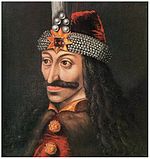- Chamber of Art and Curiosities, Ambras Castle
-
The Chamber of Art and Curiosities is a cabinet of curiosities created by Ferdinand II, Archduke of Austria in the 16th century. Representing an excellent example of a late Renaissance encyclopedic collection of its genre, it continues to be displayed at Ambras Castle near Innsbruck, the same setting since its inception.[1] Ferdinand II, like many other rulers of the Renaissance, was interested in promoting the arts and sciences. He spent considerable time and money on his unique collection and converted the medieval Ambras Castle into a contemporary palace to display his possessions. Beside the chamber of arts and curiosities the castle is home to a collection of medieval weapons and the "Habsburg Portrait Gallery". The collection also contains paintings by Hans von Aachen. Today, these collections at Ambras are administered by the Kunsthistorisches Museum, Vienna.
Contents
The Collection
A variety of uncommon objects are on display, including a woodcarving of "Death as a Hunter" by Hans Leiberger, goblets, coral collections and artifacts, glass figures, centerpieces, mechanical toys, clocks and various instruments.[1] Also, Asiatica of the period are included with a suit of samurai armor, a Ryukyu bowl, and a silk painting from China.[1]
Paintings
The Ambras collection contains a number of unique portraits, and some of the subjects were perceived at the time as miracles of nature.[2] The painters are not known. Giants and dwarfs, people with hirsutism and others, are shown, including:
Vlad Ţepeş
Vlad III the Impaler's depiction was painted about one century after his reign and represents one of his earliest portraits. It is intended not only to show him as a ruler but also to be a "psychogram of evil".[2]
Petrus Gonsalvus
The collection has a painting of Pedro Gonzalez (Petrus Gonsalvus) as well as other people who display an extreme form of hirsutism, also called Ambras syndrome in 1933 in reference to its depiction at this collection.[2] The life of Pedro Gonzalez has been well chronicled as he became famous during his lifetime on account of his condition. Born in 1537 in Tenerife, he first came to the court of Henry II, King of France, who sent him to the court of Margaret of Parma, regent of the Netherlands. He got married there and some of his children were also afflicted with hypertrichosis universalis and painted. His family became an object of medical inquiry by Ulisse Aldrovandi among others. Gonzalez eventually settled in Italy.
A man with disabilities
This is an unusual and unique late 16th-century painting of a man with a physical disability. In typical portrait-style he gazes at the viewer, while the top of his head is covered by a hat. A fashionable neck piece separates his head from his naked body, which lies chest-down on a dark green sheet. His limbs appear withered and useless. Originally the portrait was partially obscured by a sheet of red paper, which the observer would lift to reveal the subject's body. Observers indicated that they were shocked. The man was probably a jester at a court.[3] An extensive analysis of the painting has been published (see external links).
Gregor Baci
This portrait represents a Hungarian hussar, by tradition Gregor Baci, who apparently survived a piercing injury with a lance to the right side of his face.[1] The injury may have occurred during a jousting tournament or while fighting the Ottoman Turks. The painting was created by an unknown artist in the 16th century and first listed in 1622.
References
- ^ a b c d Kunsthistorisches Museum, Vienna. "Ambras Collection". http://theatermuseum.at/system2E.html?/staticE/page382.html. Retrieved June 29, 2009.
- ^ a b c Erche B (August 2008). "Der schlimmste Boesewicht der Walachei" (in German). Weltkunst: 7. http://www.kunstkammer.com/pdf/Weltkunst082008.pdf. Retrieved June 30, 2009.
- ^ Schönwiese V, Flieger P. "The Painting of a Disabled Man from the 16th century - a participatory action research project". http://bidok.uibk.ac.at/projekte/download/bildnis-ambras/handout_san_francisco.pdf. Retrieved 2009-06-29.[dead link]
External links
Categories:- Innsbruck
- Art museums and galleries in Austria
- Collections of the Kunsthistorisches Museum
Wikimedia Foundation. 2010.




